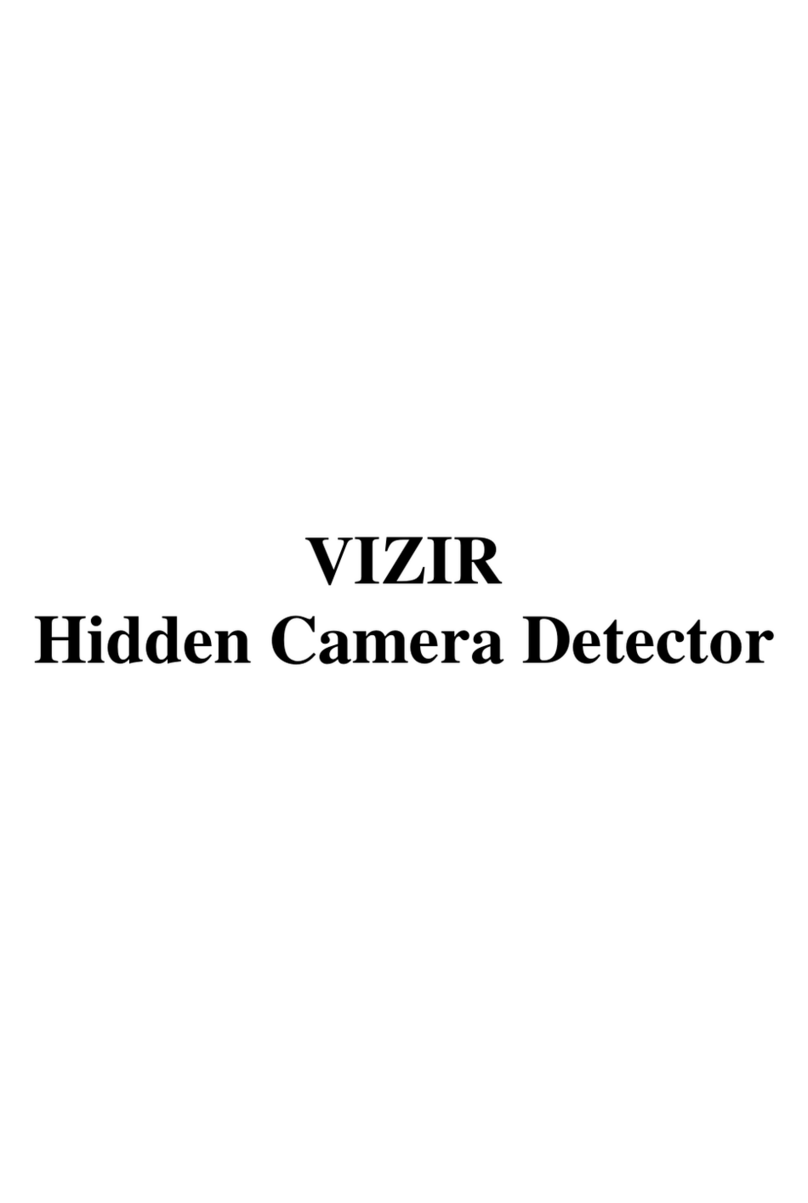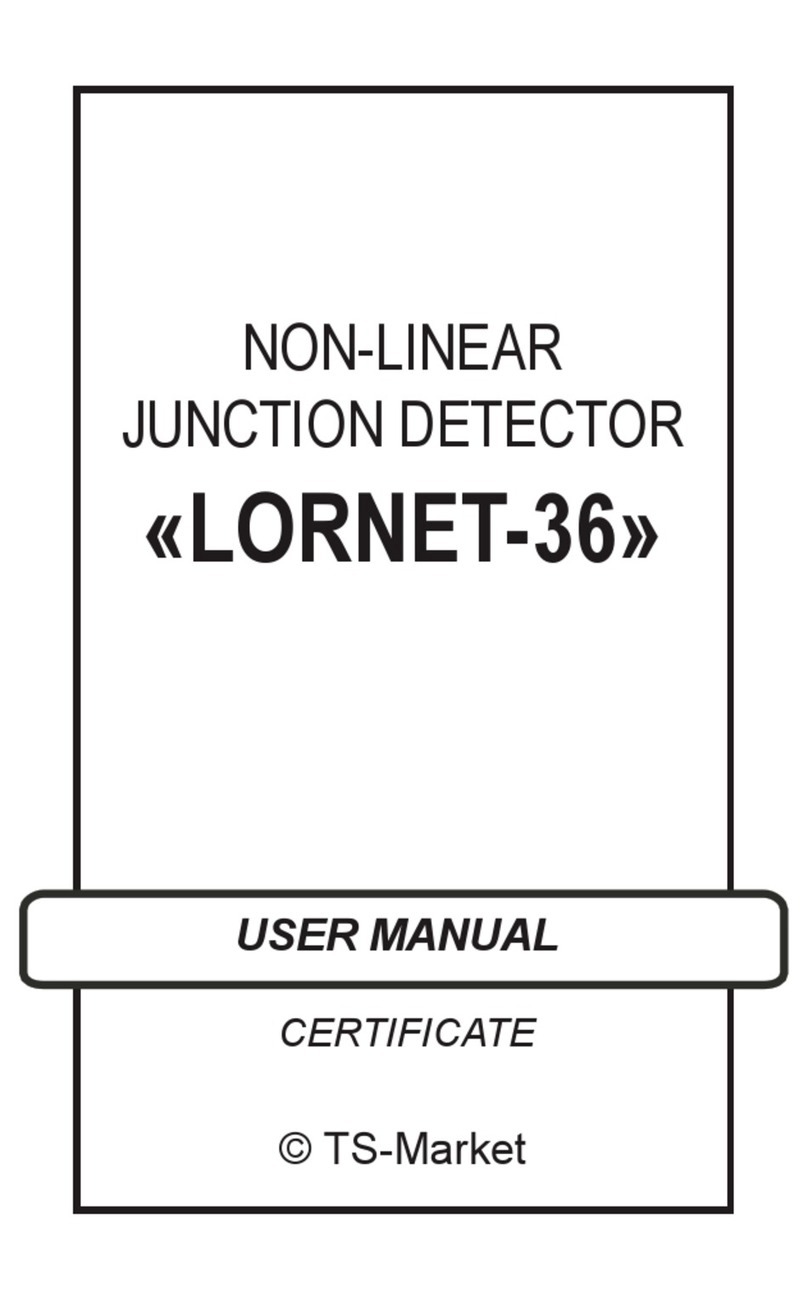
10
• Reception and digital processing of the 2nd
and the 3rd frequency harmonics. Simul-
taneous display of the 2nd and the 3rd
harmonics levels gives the opportunity to
dis-tinguish with a high reliability between
signals of articial semiconductors integrated
in electronic devices and natural corrosive
ones which may appear at oxidized junc-tion
points of various metals.
• Demodulation of the 2nd and 3rd harmonics
response, their amplication to the level
required for tapping both by earphones and
a built-in loudspeaker. The amplication is
adjustable within a 20 dB range. The operator
can listen to demodulated signals of the 2nd
and 3rd harmonics in turn.
• Indication of the probing signal levels (1) as
well as of the 2nd (2) and 3rd (3) harmonics
levels (Fig. 2).
5.2 Hinge joint of the transceiver antenna unit
with a knob is designed to transform the unit into
transportation position. (see Fig.3). Besides, it
helps the operator to x the antenna in a position
convenient for search.






























